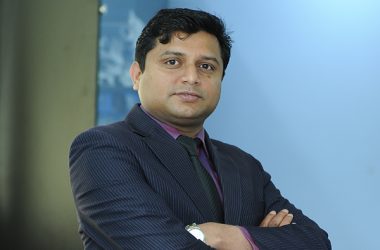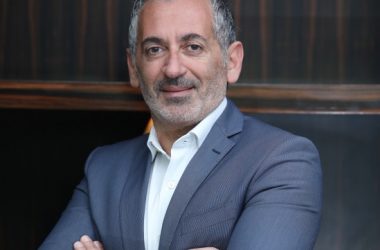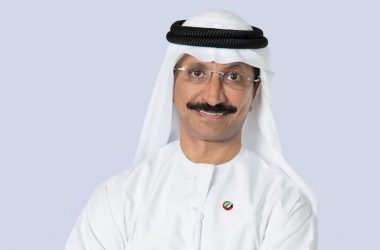 The realms of healthcare and technology have long been partnered. As technology improves, so too do the tools at the disposal of the care-takers that fight to keep us healthy every day. From innovative scanners to surgery performed with high-tech lasers, hospitals and medical professionals rely on technology to continue moving forward.
The realms of healthcare and technology have long been partnered. As technology improves, so too do the tools at the disposal of the care-takers that fight to keep us healthy every day. From innovative scanners to surgery performed with high-tech lasers, hospitals and medical professionals rely on technology to continue moving forward.
Recently, the technology teams at clinics and hospitals everywhere have been leveraging technology, not only in the surgery theatre, but in the office of admissions as well.
Seha Health Services Company in Abu Dhabi has recently implemented an electronic medical records project that has streamlined the admissions and documentation process at each of their facilities. With over a dozen facilities to manage, as well as thousands of patients and employees, digitising Seha’s medical recording process is no small feat. From research to training and implementation, George Yacoub, Chief Information Officer, Seha Company, has lead the IT team and all of Seha’s employees down the path of digitalisation.
Digitising medical records is of obvious benefit to the patient. A patient at Seha, with the new Malaffi electronic medical records system, can enter any Seha facility knowing the physician or medical professional has a complete and uniform medical history on hand before treatment or diagnoses even begins.
A lack of sound medical record keeping can lead to medical redundancy, or more alarmingly, serious errors. Without a solid record of what has happened to a patient, tests can be performed twice and patients are far more likely to be misdiagnosed. With the health of their patients in mind, Seha took on the Malaffi project.
However, this trick of record keeping did not happen overnight. The Malaffi project took planning, effort and follow through on the part of Yacoub and the whole Seha IT department.
When it comes to managing projects at Seha, however, Yacoub realises that he can only benefit by involving each affected branch of the company. “As far as the IT department at Seha goes, we are involved in every aspect of the business, however, we try not to own every single project. By that I mean that we try to empower others to take ownership of the projects that affect them.”
This philosophy was especially true for the implementation of the Malaffi project. Yacoub was determined to implement a system that was not only a benefit to the IT department, but that reflected the needs of the staff and the patients of Seha. Yacoub recruited physicians and other service providers directly into his IT team. “Everyone practices medicine differently, so when it came down to actually designing systems, we relied on the input of the physicians,” he recalls.
Indeed, the key was finding what processes and systems were right for the entire network of hospitals and clinics. As such, Seha decided to partner with intelligent Electronic Health Record (EHR) firm Cerner to address their electronic medical record needs. It was not a partnership decision that Yacoub or his staff would take lightly, “We determined through careful evaluation that they were the right one for this project. When we need to add a function to the system, we go through Cerner, so we knew the partnership had to be a long term fit.”
With the system in place, its users need to be trained. Just as everyone practices medicine differently, not all users were in the same place when it came to technical skills. “There were people that simply had not used a computer before,” Yacoub recalls, “in this situation we set up stations where new computer users could simply play games on the computer to get used to using a mouse. We had to change and adapt with the best way to deliver the message.”
To train the staff on how to actually use the electronic medical records system, Yacoub again turned to the clinicians. “The training was provided by newly-acquired IT staff that a few months before were working as clinicians,” he says. “No one likes when IT comes down and tells them how to do their duties, it’s much better to have trainings delivered by medical staff that know first-hand the challenges the end users may face.”
The results of Seha’s efforts are immediately obvious. When a patient comes to any Seha facility, their medical records are immediately available and are complete, no matter which facilities have been visited in the past. In addition, as the process progresses, Seha is taking steps to take existing paper records and integrate them with the digital files. “If you are a patient with us who has visited us in the past, chances are you have a paper record or a paper record that has been scanned in digitally with us. When you visit us again, then the EMR record is created,” explains Yacoub.
With all this data being created and stored digitally, security concerns are, of course, at the forefront of Yacoub’s agenda. “We take data security very seriously,” assures Yacoub, “We host all of our data on a private cloud, but it’s not only about storage or how to log in to the system. It is also about when and where users log in, and how long the session lasts. We are in constant talks with staff to determine what the best practices are for the system in terms of security and usability.”
Though the initial implementation phase is complete, Yacoub and Seha have future plans for the Malaffi Project. “We are beyond the implementation phase,” says Yacoub, “so we need to embark on a new training campaign.” Now that the data is digital, the possibilities are wide open. Imagine a hospital where one can simply swipe a card to bring up a patient’s medical history anywhere. Imagine being able to simply view one’s own history online or text a question to an on-call clinician who has access to your data. These are just a few of the possibilities that are made available by electronic medical record projects like Malaffi at Seha.





